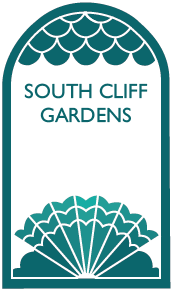SCG Bird recording 19th May 2021 9.30 – 10.15 Holbeck Ravine/below putting green
| Bullfinch | 2 |
| House sparrow | 3 |
| Dunnock | 5 |
| Wood pigeon | 4 |
| Magpie | 3 |
| Blue tit | 2 |
| Great tit | 1 |
| Robin | 2 |
| Blackbird | 4 |
| Goldfinch | 6 |
| Greenfinch | 1 |
| Chaffinch | 2 |
| Song Thrush | 1 |
| Lesser whitethroat | 1 |
| Chiffchaff | 2 |
| Wren | 2 |
| Jackdaw | 5 |
| Carrion crow | 2 |
| Also seen on Monday, 3rd May, in Holbeck Ravine at the feeders | |
| Siskin | 2 |
| Marsh tit (see photo) 1 | 1 |

Is it possible to feel blasé about a particular bird? Is it, for example, OK to feel blasé about a dunnock, your archetypal LBJ (Little Brown Job)? I suppose if your indifference is based on initial appearances, i.e. drab and brown and potentially profoundly boring, or how often you see it, i.e. a lot in the Ravine where there’s food about, then to an extent it’s understandable and possibly justified. On the other hand, the closer you look and the more you know about a particular bird, say, our little brown friend the dunnock again, then you realise just how interesting they can be. For starters, is it really just a boring brown? Take closer look. Maybe it isn’t. And listen to its song. Spring really is its time of year. And what about that dunnock social life? Well now, there’s a story! Front page of the Sun stuff. Check it out.
We lived in Chesterfield for 20 years before we moved here and we also fed the birds. On very rare occasions, perhaps 3-4 times in all, we had a glorious bullfinch perch in our hawthorn tree to visit our feeders. Wow, what a looker, what a bird! (Extremely useful facts. The German name for a bullfinch is Dompfaff, which translates as “a cathedral priest or cleric”. Obvious, really. It is also known as a Blutfink, a blood finch – also pretty obvious – or slightly less obviously as a Gimpel, another word for a dimwit)

Here though, right from the start, we’ve had up to five chomping on the sunflower hearts at more or less the same time. Three males and two females, the latter looking just like the chaps but minus the colour, as if seen on a dark and moonless night. This became a habit. Food out, long-tailed tits first in at the suet balls right by my face and then the bullfinches, piping gently at first from the bushes, checking stuff out, circumambulating (or whatever the flying word is) the feeders and then in there, feet braced for a good feast. After a while, and after repeated questions from passers-by about whether I’d seen “The Bullfinches!” and my answer, “Yes, of course I have, forty-two in the last hour!”, I had, I admit, become rather blasé about it all. They were there every day. I’d photographed them (tried to), watched them through binoculars, felt I pretty much knew them and their secrets. And then, one day last week, none came. And the next day none. Nor on the third day. Crikey, I thought, as an overwhelming sense foreboding and sadness hit me. Where are they? What if the sparrowhawk……?
And then on the fourth day, yesterday, a female. Two minutes later, a male. Huge relief flushed through my veins. And the slow realisation that, unforgivably, I had in fact started to take their presence for granted.
Could I afford to do this? If we look at the state of nature here in the UK then it may come as a big surprise to discover that this country is one of the most nature-depleted lands on the planet. And the answer to the question then is clearly no. And when you consider the conservation status of some of our most iconic birds as well as many which don’t catch our attention in the same way then they, and we, really are in trouble.
A look at the list on the link will show that some of our very own Holbeck Ravine birds are red-listed, meaning they have the highest conservation priority and are in need of urgent action (marsh tit, house sparrow, song thrush) and amber-listed, the next most critical group, where you will find both bullfinch and dunnock.
https://www.rspb.org.uk/birds-and-wildlife/wildlife-guides/uk-conservation-status-explained/


Comments are closed